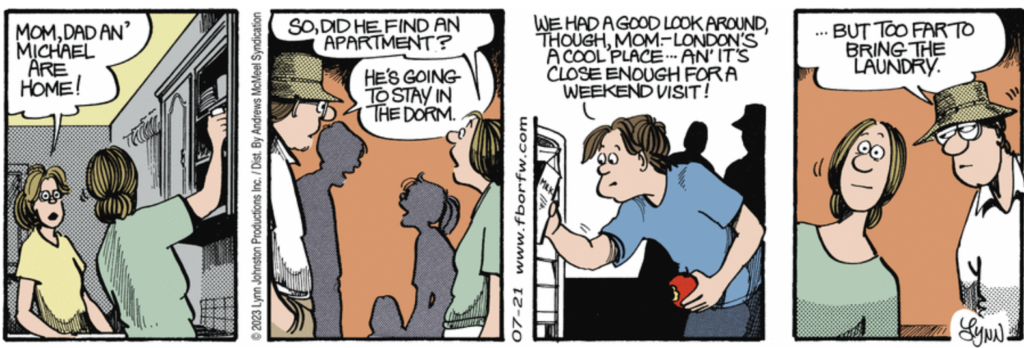Misplaced Comma
The rule is that you should never have an odd number of commas between the subject and the verb in a sentence.
He should replace the comma with “that” and make a nice clean restrictive clause. Or he could put the comma after “certain.”
Subscribe to this blog's RSS feed
An Insult that’s a Compliment
Last panel. Nobody cares where the comma should go, right?
But that betrays the secret of good writing: if you do it right, nobody notices. The reader absorbs the content effortlessly. If you need to ask where a comma (or other punctuation, syntax, or grammar) goes, ask me!
A Good Negative Example of Why You Need the Oxford Comma
The Oxford comma is putting a comma before the last item (before the conjunction if the list has one) in a list of three or more. For example: one, two, and three. A lot of styles tell you not to put in that last comma. The excuse is that it saves space. (Humbug!) the problem is that without that comma you might be misunderstood sometimes. Here’s an example where you shouldn’t use that comma, because it’s not a list of three or more things even though at first glance that’s what it looks like. First panel:
The first item (Mom,) is direct address, so the other two words (Dad and Michael) don’t make a list of three, so no comma.
Bad Comma!
We English teachers/tech writers/curmudgeons have an informal rule:
Never separate a subject and verb with an odd number of commas. The way this sentence does:
But that otherwise mundane act, has sparked a state investigation.
https://s2.washingtonpost.com/camp-rw/
Put no comma between “act” and “has”! Harrumpf.
I like my posts to have pictures, so here’s a picture from the movie that the essay containing the bad sentence is about:

Another English Teacher Comic
You see both solecisms, right?

I don’t need to point out the misspelling and the misplaced comma, do I?



